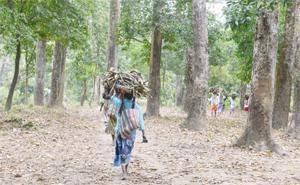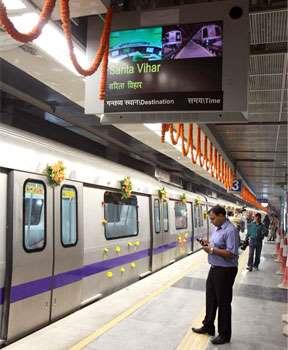February 16, 2014
DELHI: One would think in these times of rising inflation that more families would be relying on the power of two salaries to get by. But contrary to popular belief, single income families are increasing in India while double or multiple income families are declining.

February 16, 2014
DELHI: One would think in these times of rising inflation that more families would be relying on the power of two salaries to get by. But contrary to popular belief, single income families are increasing in India while double or multiple income families are declining.

This trend is marked in rural areas which have a much higher proportion of multiple-employed households because of poverty and dependence on agriculture. In urban areas, most households have single incomes, and their proportion is slowly increasing.
In rural areas, 54% of households had more than one employed person in 2011-12, down from about 66% in 1993-94. Single income households increased from 31% to 41% in the same period. Households with no one employed increased from 3 to 5%.
In urban areas, single income households increased from 53% in 1993-94 to 55% in 2011-12 while multiple income households declined from 39% to 36%. The share of households with nobody employed increased marginally from about 8% to 10%.
These counter-intuitive results emerge from a comparison of successive surveys of employment done by the National Sample Survey Organization (NSSO). Only people of 15 years age or more were considered for these findings.
Experts think that a basket of pulls and pushes is responsible for this rather peculiar trend — and its fulcrum is whether women in the household are working or not. But that is not the only factor. Splitting of joint families into nuclear families, whether by choice or by economic compulsion, can also cause such changes, they say.
"The single biggest driver of the decline of multiple-employed households is that opportunities for women's work have declined. This includes the dismal state of facilitative measures like day-care centres for children and transport for women," says Rajni Palriwala, professor of sociology at Delhi University, who has done extensive research on women's employment.
Despite better education and more economic need to supplement family incomes, women are finding it difficult to work and the proportion of housebound non-employed women aged 15 years or more has increased from 57% in 2004-05 to 65% in 2009-10.
TOI has reported earlier that rural women's jobs had declined by a staggering 9 million between 2009-10 and 2011-12. "Multiple employed households are more common in poorer sections, who are also less educated and have a higher proportion of dalits and adivasis," said Neetha N of the Center for Women's Development Studies (CWDS), a Delhi-based research organization. But even there, because of lack of opportunities, women are losing jobs and thus making families dependent on single incomes, explains Neetha.
Does this mean that the trend towards single incomes is because of rising prosperity? It doesn't appear so because average monthly income in rural areas, adjusted to inflation has increased by a measly 37% in 18 years, according to another NSSO survey on monthly consumer expenditure. In urban areas too, the increase is not much — just 54%.
Migration for employment may be one factor that is feeding this trend, says Neetha. If two young men from a family in a village move to a city in search of work leaving their parents behind, we will get three single income households instead of one multiple-income household, she says giving an example.
"Our research also indicates that the nature of work that is acceptable varies with caste and education — because of a consciousness of social status, many upper caste families in villages will resist employment as casual laborer. But economic distress changes these customs," she says.
Courtesy: TOI
















































































































